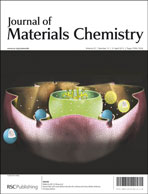A stable titanate nanobelt (TNB) particle suspension was prepared by a hydrogen-bond-driven assembly of pre-hydrolysed fluoroalkylsilane (FAS) on its surface. A one-step electrophoretic deposition was applied to fabricate a transparent cross-aligned superhydrophobic TNB/FAS film on a conducting glass substrate. By controlling the deposition time, we have shown the transition between a “sticky” hydrophobic state (high contact angle with strong adhesion) and a “sliding” superhydrophobic state (high contact angle with weak adhesion). The optical transmittance can reach as high as 80% throughout most of the visible light region of the spectrum. These coatings have also displayed high chemical stability and self-cleaning ability. Upon heating the hydrophobic coatings at 500 °C, the TNB coating transforms into a porous TiO2(B) structure with superhydrophilic behavior and could be used for anti-fogging applications. With this TiO2-based system, we have demonstrated three different wetting states: superhydrophobicity with weak adhesion, high hydrophobicity with strong adhesion, and superhydrophilicity with immediate water spreading. Moreover, this work has also demonstrated superhydrophobic TNB/FAS films with high chemical stability and good self-cleaning performance and superhydrophilic pore-like TiO2(B) films with rapid water spreading and excellent anti-fogging ability.

You have access to this article
 Please wait while we load your content...
Something went wrong. Try again?
Please wait while we load your content...
Something went wrong. Try again?


 Please wait while we load your content...
Please wait while we load your content...